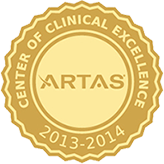 Whether their goal is to turn back the hands of time, look as good as they feel, or age gracefully, Americans are embracing non surgical cosmetic facial treatments to get the quickest results with the least down time. In their quest for a more youthful appearance, however, they should keep in mind that popular non invasive procedures like the nonsurgical face lift and laser skin resurfacing are not just beauty routines. They’re medical treatments that should be respected for the benefits and risks associated with them.
Whether their goal is to turn back the hands of time, look as good as they feel, or age gracefully, Americans are embracing non surgical cosmetic facial treatments to get the quickest results with the least down time. In their quest for a more youthful appearance, however, they should keep in mind that popular non invasive procedures like the nonsurgical face lift and laser skin resurfacing are not just beauty routines. They’re medical treatments that should be respected for the benefits and risks associated with them.
Most of us want to look as good as we feel and reasonably attractive, and most people have an issue or two that they would admit to being self-conscious about. These procedures can be done rather quickly with a small amount of discomfort, there’s very little recovery time, and the results are fairly evident within a day or two. And the economics are much kinder to the person who does a little maintenance from time to time as opposed to the person that undergoes a lengthy surgical procedure.
The top nonsurgical procedures of choice for both sexes in the United States are
BOTOX® Cosmetic,
injectable dermal fillers,
chemical peels, and microdermabrasion. Other popular procedures include the nonsurgical face lift and laser skin resurfacing, which is often used to deal with acne scars or general skin care.
Botox or Xeomin blocks the nerve impulses that cause the muscle contractions that control certain facial expressions which, in turn, cause a breakdown of collagen leading to creases.
Included in the category known as
Injectable dermal fillers are commercial products like Juvederm, Belotero and Radiesse. Fillers, which replace the collagen and facial fat that we lose as we age, are used to lift, plump, smooth, and recontour the face. Botox and fillers are often administered in conjunction with each other to achieve the nonsurgical face lift or “liquid face lift”.
Like Botox and dermal fillers,
microdermabrasion works best when repeated in a series of skin rejuvenation treatments. It involves using a machine that sprays fine mildly abrasive crystals to remove the epidermis, or outer skin layer consisting primarily of dead skin cells. The crystals and cells are then vacuumed away. This controlled trauma to the skin leaves it looking smoother and healthier, with improvements to both the epidermis (the top layer of skin) and dermis (the middle layer of skin that includes collagen and elastic tissue.)
Chemical peels are another type of skin resurfacing procedure that uses acids or other chemicals to treat sun-damage, wrinkles, blemishes and blotchiness. They can be applied to the entire face or just specific areas, or almost anywhere else on the body for smoother, more even-toned skin.
Like dermabrasion and chemical peels, laser skin treatments help revitalize aged or sun-damaged skin, revealing fresher, younger-looking skin. Other usages include the treatment of birthmarks, acne scars, and vascular lesions. Moles, warts, tattoos, and unwanted body hair can also be removed by laser skin treatment.
While these procedures may all seem to be mainly cosmetic in nature – more beauty procedure than surgical procedure – they are considered surgical, albeit less invasive than many other cosmetic surgery procedures. There are real risks involved that should be understood prior to committing to treatment. For example, using too much Botox or injecting it into the wrong spot can result in a drooping eyebrow or drooling. If dermal fillers are overinjected, you may end up with more augmentation than you were counting on, at least temporarily. With both microdermabrasion and chemical peels there is a risk of hyperpigmentation (dark spots) of the skin. Infection, bruising, and swelling are all temporary side effects of any procedure.
For best results with your noninvasive cosmetic procedure, consult with one or more plastic surgeons or dermatologists and make sure they are trained and experienced in the specific treatment that interests you. They should be able to assess your situation, answer your questions, lay out the risks and benefits, and determine if you are a viable candidate for the procedure.
First-time patients can ease their way into noninvasive cosmetic treatments by requesting one of the temporary fillers that last up to a year to “try on” the results. Start with a conservative approach to make sure you like what you see, and sample just one treatment at a time so you can discern what works and what doesn’t in your particular case.
This Information of brought to you courtesy of Dr. Mark Bishara And The Paragon Plastic Surgery & Med Spa
NO TRATAMIENTOS COSMÉTICOS QUIRÚRGICAS: NO SOLO A rutina de belleza
Ya sea que su objetivo es hacer retroceder las manecillas del tiempo, verse tan bien como se sienten, o envejecer con gracia, los estadounidenses están adoptando tratamientos faciales cosméticos no quirúrgicos para obtener los resultados más rápidos con el menor tiempo de inactividad. En su búsqueda de una apariencia más joven, sin embargo, deben tener en cuenta que tan popular como el y no son sólo rutinas de belleza. Son tratamientos médicos que deben ser respetados por los beneficios y riesgos asociados con them.non procedimientos invasivos como el y no son sólo rutinas de belleza. Son tratamientos médicos que deben ser respetados por los beneficios y riesgos asociados con lavado de cara them.nonsurgical y no son sólo rutinas de belleza. Son tratamientos médicos que deben ser respetados por los beneficios y riesgos asociados con them.laser rejuvenecimiento de la piel no son sólo rutinas de belleza. Son tratamientos médicos que deben ser respetados por los beneficios y riesgos asociados con ellos.
La mayoría de nosotros quiere verse tan bien como nos sentimos y razonablemente atractiva, y la mayoría de la gente tiene un problema o dos que iban a admitir que soy consciente de. Estos procedimientos se pueden realizar con bastante rapidez con una pequeña cantidad de incomodidad, hay muy poco tiempo de recuperación, y los resultados son bastante evidente dentro de un día o dos. Y la economía son mucho más amable con la persona que hace un poco de mantenimiento de vez en cuando en lugar de la persona que se somete a un procedimiento quirúrgico largo.
Los principales procedimientos no quirúrgicos de elección para ambos sexos en los Estados Unidos son Botox, rellenos dérmicos inyectables, peelings químicos y la microdermoabrasión. Otros procedimientos populares incluyen el estiramiento facial no quirúrgico y la piel con láser, que se utiliza a menudo para tratar cicatrices de acné o cuidados generales de la piel.
Botox o Xeomin bloquea los impulsos nerviosos que causan las contracciones musculares que controlan ciertas expresiones faciales que, a su vez, causan una descomposición del colágeno que conduce a las arrugas.Se incluyen en la categoría conocida como inyectables rellenos dérmicos son productos comerciales como Juvederm, Belotero y Radiesse. Rellenos, que reemplazan el colágeno y grasa facial que perdemos a medida que envejecemos, se utilizan para levantar, regordeta, liso, y remodelar la cara. Botox y los rellenos se administran a menudo en combinación con otros para lograr el estiramiento facial no quirúrgico o “estiramiento facial líquido”.
Al igual que el Botox y los rellenos dérmicos, la microdermabrasión funciona mejor cuando se repite en una serie de tratamientos de rejuvenecimiento de la piel. Se trata de utilizar una máquina que pulveriza cristales ligeramente abrasivas finas para eliminar la epidermis, o capa externa de la piel que consisten principalmente de las células muertas de la piel. Los cristales y las células son entonces aspiradas de distancia. Este trauma controlada en la piel hojas de su aspecto suave y más saludable, con mejoras tanto a la epidermis (la capa superior de la piel) y la dermis (la capa media de la piel que incluye colágeno y tejido elástico.)
Los peelings químicos son otro tipo de procedimiento de rejuvenecimiento de la piel que utiliza ácidos u otros productos químicos para tratar el daño solar, arrugas, manchas y manchas. Se pueden aplicar en todo el rostro o zonas específicas sólo, o casi cualquier otra parte del cuerpo para la piel más suave y tonificada siquiera.
Al igual que la dermoabrasión y peelings químicos, tratamientos de la piel con láser ayudan a revitalizar la piel envejecida o dañada por el sol, revelando una piel más fresca y joven. Otros usos incluyen el tratamiento de las marcas de nacimiento, cicatrices de acné y lesiones vasculares. Moles, verrugas, pelo tatuajes, y el cuerpo no deseado puede también ser eliminado por tratamiento de la piel con láser.
Si bien estos procedimientos pueden todos parecen ser principalmente de naturaleza cosmética – más procedimiento belleza de procedimiento quirúrgico – se consideran quirúrgica, aunque menos invasiva que muchos otros procedimientos de cirugía cosmética. Hay riesgos reales involucrados que deben ser entendidos antes de comprometerse con el tratamiento. Por ejemplo, el uso excesivo de Botox o inyectarlo en el lugar equivocado puede resultar en una caída de la ceja o babeo. Si se sobreinyectado rellenos dérmicos, usted puede terminar con más aumento de lo que contabas, al menos temporalmente. Con ambos microdermoabrasión y las exfoliaciones químicas hay un riesgo de hiperpigmentación (manchas oscuras) de la piel. La infección, hematomas e hinchazón son todos los efectos secundarios temporales de cualquier procedimiento.
Para obtener los mejores resultados con su procedimiento estético no invasivo, consultar con uno o más cirujanos plásticos o los dermatólogos y asegúrese de que están capacitados y con experiencia en el tratamiento específico que le interese. Ellos deben ser capaces de evaluar su situación, responder a sus preguntas, exponer los riesgos y beneficios, y determinar si usted es un candidato viable para el procedimiento.
Los pacientes de primera vez pueden facilitar su camino en tratamientos cosméticos no invasivos solicitando uno de los rellenos temporales que duran hasta un año para “probar” los resultados. Comience con un enfoque conservador para asegurarse de que te gusta lo que ves, y muestra sólo un tratamiento a la vez para que pueda discernir lo que funciona y lo que no funciona en su caso particular.
Esta información os traído a usted por cortesía de Dr. Mark Bishara Y La Cirugía Plástica y Paragon Med Spa










